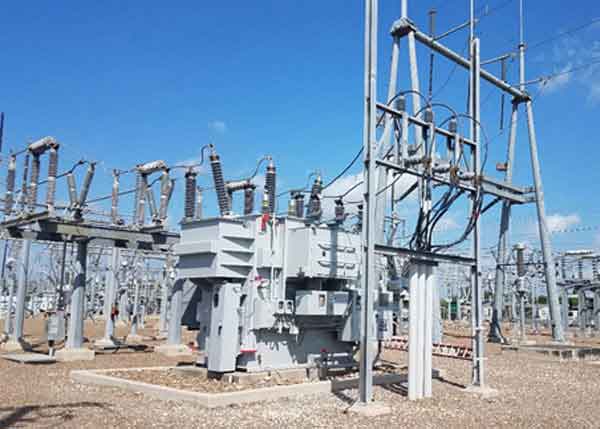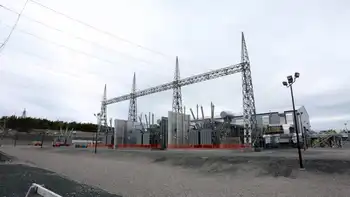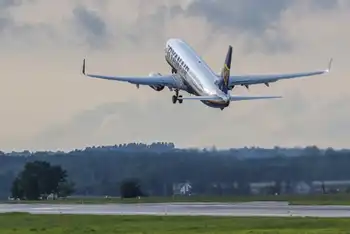Floating turbines may join NorwayÂ’s offshore rigs
By Reuters
NFPA 70e Training - Arc Flash
Our customized live online or in‑person group training can be delivered to your staff at your location.

- Live Online
- 6 hours Instructor-led
- Group Training Available
At least that is the ambition of Norwegian authorities and industry, eager to splash some green on their oily image and use their offshore expertise to corner a potentially lucrative new market - floating wind farms in deep sea waters.
Norway's government is contemplating licensing "blocks" for offshore wind generation, and Norwegian oil company StatoilHydro aims to start work next year on a floating turbine project near the site of the first North Sea oil discovery 40 years ago.
"We are the best place in Norway if you love wind," Mayor Jarle Nilsen said of Utsira, a North Sea island of just 6 sq km (2.3 square miles) and home to 210 people who already get most of their power from two onshore turbines.
"We had wind every day except one last year," he told Reuters, thrilled by the prospect of two experimental offshore wind projects anchoring in nearby waters.
With Europe's second-longest coastline after Greece, Norway is hard hit by winds blowing off the Atlantic and, along with Britain, well placed for wind energy projects.
Offshore turbines can be twice as powerful as land-based units due to stronger, more sustained winds at sea.
Out of sight from the coast, such wind farms could use modified, more efficient turbines because limiting noise, a key concern for land-based wind farms, is not as critical offshore.
The technology is not tested and costly offshore repairs could quickly drive up costs, analysts say.
The price of wind electricity produced will also probably stay above that of conventional fossil fuel-based power for years to come, meaning that state subsidies play a major role.
"We have been very clear in saying that there are exciting prospects in offshore wind and indeed floating wind," said Deputy Energy and Petroleum Minister Liv Monica Stubholt.
"But we also acknowledge that experts advise us to 'hurry slowly' because there are still considerable technological hurdles that need to be hopped."
Windpower is growing and set to top 100 gigawatts in installed global capacity in 2008 in a push for alternatives to coal- or gas-powered plants, which emit heat-trapping gasses. Still, wind accounts for only 1 percent of the global power mix.
About 98 percent of that capacity is at land-based turbines but new technology and the benefits of pushing windfarms away from populated areas are strengthening the offshore market - presently led by Britain and Denmark.
The Brussels-based Global Wind Energy Council has forecast that the world's wind market will reach 240 GW by 2012, with a growing share coming from offshore.
Britain has an ambitious goal for 35 GW in installed offshore wind capacity by 2020.
The floating turbine concept allows wind farms to wade further out to sea. Anchored to the seabed, they can be built in deeper waters where the sea floor would be too soft for standing turbines.
StatoilHydro's project, expected to get an official go-ahead soon, will be a 2.3 megawatt turbine, with a diameter of 107 meters and jutting nearly 80 meters above the water. A further 120 meters of the floating concrete hull will be submerged.
The "Hywind" project, which includes German Siemens' wind power unit, will test the technology and look for ways to cut operating and maintenance costs for the giant turbines to be located in water depths of up to 700 meters.
If the demonstration project succeeds, more may come early next decade to provide supplemental electricity for places such as some North Sea platforms or coastal Norwegian towns.
"It also has global potential in places with the proper sea and wind conditions, a suitable market size and the right price incentives," said Jan-Fredrik Stadaas, head of wind energy project development at StatoilHydro.
Such markets could include the United States, Canada, Spain and Portugal, France, Japan and Britain, Stadaas said.
Another project, led by Norwegian utilities Statkraft and Lyse and including StatoilHydro and Shell, seeks to build wind turbine towers that tilt against the wind to withstand severe North Sea conditions. A full-scale 5 MW prototype of the "Sway" turbine is planned in 2010.
The Norwegian government is providing cash to both projects but the real test of its resolve will come in its offshore wind regulations, which may mimic the country's oil and gas rules.
Deputy Minister Stubholt said Norway may offer offshore wind power licenses in specific blocks, along with incentives.
She said Norway was slow to embrace wind energy because most of its electricity already comes from clean hydropower, limiting demand for more renewable energy.
Industry officials hope the state aid plans include investment-based subsidies or feed-in tariffs, where offshore generators would be given a steady price for their electricity, as well as link-ups to existing grids.
"Given concerns about reliability of untested technology and a virtually non-existent market for offshore wind installation and maintenance, these projects require an active role by the state to lower some of the risks," said one industry official.











